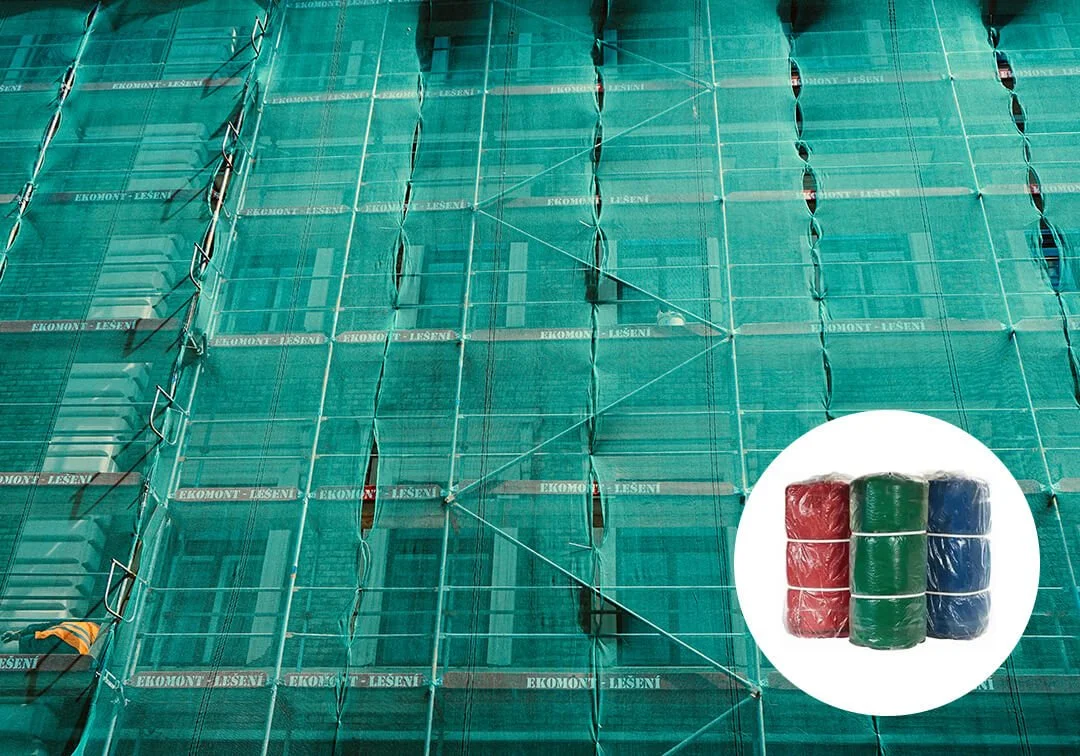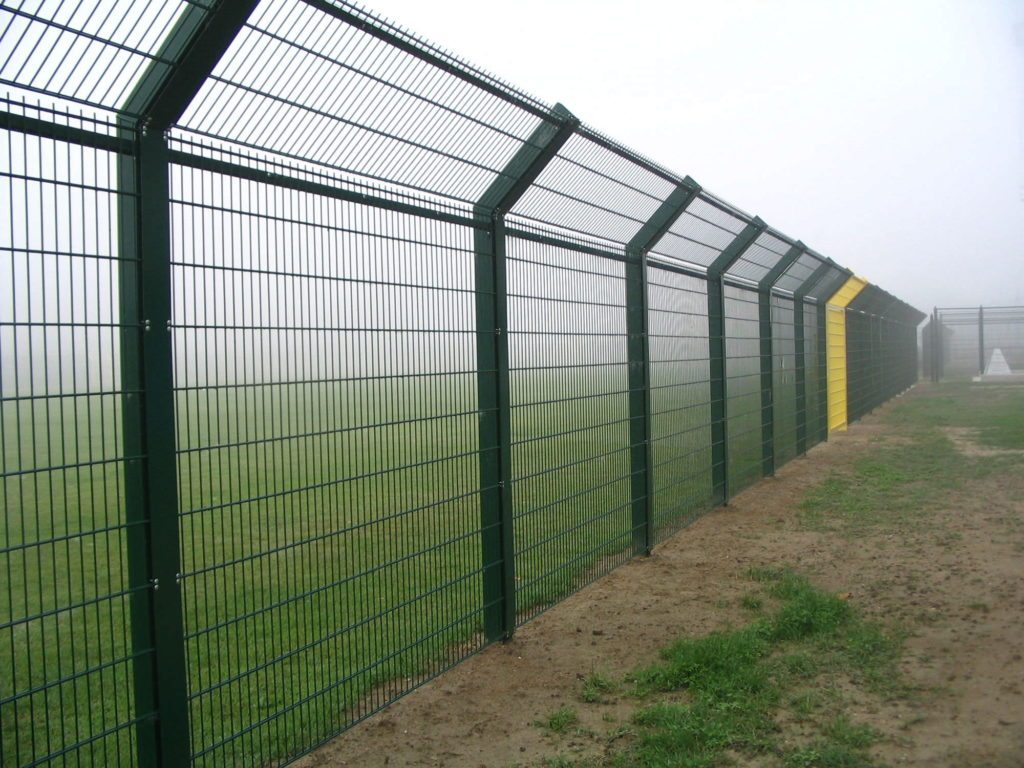Scaffold Mesh: Why It’s Essential for Safety on Construction Sites

What Is Scaffold Mesh and How Does It Enhance Safety on Construction Sites?
Scaffold mesh is a specialised fabric barrier system that attaches directly to scaffolding structures, creating a protective envelope around construction work areas. This essential safety component transforms standard scaffolding into a comprehensive containment system that addresses multiple hazards simultaneously.
The primary function of scaffold mesh centres on debris containment – acting as a physical barrier that prevents tools, building materials, and construction waste from falling to ground level. You’ll find this particularly crucial on multi-storey projects where even small objects can become dangerous projectiles when dropped from height.
Key Safety Functions
- Tool retention: Prevents hand tools and equipment from slipping through scaffolding gaps
- Material containment: Catches loose debris, dust, and construction materials
- Weather shielding: Reduces wind exposure that could destabilise materials or workers
The worker protection benefits extend beyond those working on the scaffolding itself. Ground-level personnel, pedestrians, and nearby property receive vital protection from falling objects – one of the leading causes of construction site injuries.
Scaffold mesh creates a safety barrier that operates 24/7, unlike temporary measures that require constant supervision. This continuous protection significantly reduces liability risks whilst maintaining productivity levels. The mesh system integrates seamlessly with existing scaffolding without requiring structural modifications, making it an accessible safety upgrade for projects of any scale.
What Are the Different Types and Materials Used for Scaffold Mesh?
Scaffold mesh types vary significantly in their construction materials and performance characteristics. The two primary materials dominating the construction industry are polypropylene mesh and HDPE mesh, each offering distinct advantages for specific applications.
Polypropylene Mesh
Polypropylene mesh represents the most cost-effective option for temporary construction projects. This lightweight material provides adequate protection against falling debris whilst maintaining excellent flexibility during installation. You’ll find polypropylene particularly suitable for short-term scaffolding applications where budget constraints are a primary concern. The material’s inherent resistance to moisture and chemicals makes it reliable for most construction environments.
HDPE Mesh
HDPE mesh delivers superior durability and strength compared to its polypropylene counterpart. This high-density polyethylene construction offers enhanced tear resistance and can withstand more aggressive weather conditions. You’ll appreciate HDPE’s ability to maintain structural integrity under heavy wind loads, making it ideal for high-rise construction projects and extended installation periods.
The Role of UV Stabilizers
UV stabilizers play a crucial role in extending scaffold mesh lifespan. These chemical additives protect the mesh fibres from solar degradation, preventing brittleness and colour fading that typically occurs with prolonged sun exposure. UV-resistant treatments can extend mesh life from months to several years, depending on the stabilizer concentration and environmental conditions.
The choice between materials depends on your project duration, budget allocation, and environmental exposure requirements. Construction sites in harsh Australian conditions particularly benefit from UV-stabilised HDPE options for maximum performance and safety compliance.
How Does Scaffold Mesh Provide Weather Protection on Construction Sites?
Weather protection becomes a critical factor when construction work extends through various seasonal conditions. Scaffold mesh acts as an effective barrier system that significantly reduces the impact of harsh environmental elements on both workers and materials.
Wind Filtration and Worker Safety
High-quality scaffold mesh provides exceptional wind filtration by reducing wind speeds by up to 70% within the scaffolding structure. This reduction creates a more stable working environment where workers can maintain better balance and control whilst handling tools and materials. The mesh’s woven design allows controlled airflow whilst preventing dangerous wind gusts from creating hazardous conditions on elevated platforms.
During storm conditions, scaffold mesh prevents wind-driven debris from entering the work area, protecting workers from flying objects that could cause serious injuries. You’ll find that properly installed mesh maintains structural integrity even in winds exceeding 80 km/h when secured with reinforced edge systems.
UV Exposure and Rain Shielding Protection
The UV protection benefits extend beyond worker comfort to material preservation. Quality scaffold mesh blocks up to 90% of harmful UV rays, preventing premature degradation of construction materials stored on scaffolding platforms. This protection reduces material replacement costs and maintains structural integrity of exposed components.
Rain shielding capabilities allow construction activities to continue during light precipitation. The mesh creates a semi-enclosed workspace that deflects rain whilst maintaining adequate ventilation. Workers experience reduced exposure to moisture, which decreases the risk of slips and maintains tool functionality in wet conditions.
How Should Scaffold Mesh Be Properly Installed and Maintained?
Scaffold mesh installation requires careful attention to detail to ensure maximum safety effectiveness. The process begins with selecting mesh featuring reinforced edges and strategically positioned eyelets that distribute load evenly across the scaffolding structure. You should position these eyelets at regular intervals—typically every 500mm—to create multiple secure attachment points.
1. Secure fastening
Secure fastening involves threading heavy-duty ties or bungee cords through each eyelet, ensuring the mesh connects firmly to the scaffolding frame’s horizontal and vertical members. The ties must maintain consistent spacing to prevent stress concentration at individual points. You’ll achieve optimal results by working systematically from one corner, gradually stretching the mesh across the entire scaffold face.
2. Tension adjustment
Tension adjustment plays a crucial role in preventing premature wear and maintaining protective integrity. Properly tensioned mesh should feel taut without excessive strain on the attachment points. Weekly inspections allow you to identify areas where the mesh has loosened due to wind loading or thermal expansion.
3. Maintenance protocols
Maintenance protocols demand regular visual assessments for tears, fraying edges, or damaged eyelets. You should document any deterioration and replace compromised sections immediately. Wind-induced movement can gradually weaken attachment points, making routine tension adjustment essential for sustained performance. Clean mesh surfaces monthly to remove debris accumulation that could create additional wind loading or mask potential damage during inspections.

Which Regulatory Standards Govern the Use of Scaffold Mesh on Construction Sites?
Construction sites worldwide must adhere to strict scaffold mesh regulations that prioritise worker safety and public protection. These regulatory frameworks establish minimum safety standards and ensure consistent implementation across different projects and regions.
United States
In the United States, OSHA requirements mandate that scaffold mesh installations meet specific performance criteria under 29 CFR 1926.451. The regulations require protective systems that prevent materials from falling more than 25 feet to areas where personnel could be struck. You must ensure your scaffold mesh can withstand wind loads and maintain structural integrity throughout the project duration.
United Kingdom
The Work at Height Regulations 2005 in the UK provides comprehensive guidance for scaffold mesh applications. These regulations specify that protective measures must be suitable for the work environment and regularly inspected by competent persons. British Standard BS EN 12811 complements these regulations by defining technical requirements for temporary works equipment.
International Standards
ISO standards play a crucial role in international scaffold mesh compliance. ISO 4892 establishes testing methods for UV resistance, whilst ISO 13937-1 defines tear resistance requirements. These standards help you select appropriate materials that will perform reliably under various environmental conditions.
Australia
Australian construction sites follow AS/NZS 1576 standards, which align with international best practices whilst addressing local climate challenges. The standards emphasise regular inspection schedules and documentation requirements that you must maintain throughout your project lifecycle.
What Are the Key Safety Benefits of Using Scaffold Mesh?
Scaffold mesh provides fall prevention benefits that directly address the most significant risks on construction sites. When properly installed, this protective barrier creates a physical containment system that prevents tools, materials, and debris from falling to ground level. This containment dramatically reduces the risk of head injuries and other serious accidents affecting workers below scaffolding structures.
How Scaffold Mesh Reduces Accidents
The accident reduction benefits extend beyond simple debris containment. Scaffold mesh acts as a secondary safety net for workers operating on scaffolding platforms, providing an additional layer of protection against falls through gaps or openings in the structure. This dual protection system significantly lowers the statistical probability of workplace incidents.
Key safety advantages include:
- Debris containment: Prevents small tools, screws, and construction materials from becoming dangerous projectiles
- Worker protection: Shields personnel on lower levels from falling objects weighing up to several kilograms
- Pedestrian safety: Creates a secure barrier protecting the public in urban construction environments
- Equipment preservation: Reduces damage to expensive machinery and materials positioned below work areas
The Impact of Scaffold Mesh on Incident Reports
Construction sites using scaffold mesh report measurably fewer incident reports related to falling objects. The mesh system captures materials that would otherwise require costly cleanup operations whilst simultaneously protecting your workforce. You’ll notice improved site organisation as workers become more confident knowing protective measures are in place, leading to enhanced productivity and reduced insurance claims. You may like to visit https://windingriver.org/lvl-formwork-timber-benefits-and-common-applications/ to get about LVL formwork timber.
How Does Scaffold Mesh Impact Construction Project Costs and Timelines?
The cost savings and construction safety benefits of scaffold mesh go beyond just the initial investment. They create measurable financial advantages throughout the entire lifecycle of a project.
Lower Insurance Premiums
Insurance providers see sites with comprehensive safety measures, such as proper scaffold mesh installation, as lower-risk operations. As a result, construction companies can enjoy reduced premium costs. Some insurers even offer discounts of 10-15% for sites that demonstrate enhanced safety protocols.
The True Cost of Workplace Incidents
To understand the financial impact of scaffold mesh, it’s important to consider the true cost of workplace incidents. A single injury caused by debris can lead to:
- Work stoppage and investigation delays
- Compensation claims that range from thousands to millions
- Increased insurance premiums for subsequent years
- Potential legal costs and regulatory fines
By preventing these costly disruptions, scaffold mesh helps maintain a continuous workflow on construction sites.
Fewer Weather-Related Delays
Another advantage of using scaffold mesh is its ability to reduce weather-related delays. When proper containment systems are in place, workers can continue their operations even in moderate wind conditions that would normally halt work on unprotected scaffolding.
Improved Project Timelines
The effectiveness of debris containment directly impacts project timelines. By minimising incident rates, you eliminate the time lost due to accident investigations, worker replacements, and equipment repairs.
Construction managers have reported that sites with comprehensive scaffold mesh systems experience more consistent daily productivity rates. This is especially true during adverse weather conditions when the mesh provides additional wind protection for both workers and materials.
Why Is Choosing Quality Scaffold Mesh Crucial for Long-Term Performance?
The benefits of selecting quality scaffold mesh go beyond just saving money initially. They also have a direct impact on your project’s safety record and how efficiently it operates. By investing in top-notch scaffold mesh materials, you’re ensuring protection that stays strong throughout long construction periods.
The Importance of Certified Tear Resistance
Certified tear resistance is the key to dependable scaffold mesh performance. Materials that meet ISO 13937-1 standards undergo strict testing to verify their ability to endure the tough conditions found on construction sites. This certification guarantees that your mesh won’t fail when faced with wind forces, debris collisions, or the continuous strain of daily construction activities.
Superior Performance Characteristics of High-Quality Scaffold Mesh
High-quality scaffold mesh exhibits better performance traits:
- Enhanced UV stability: prevents deterioration from extended sun exposure
- Reinforced edge construction: maintains structural strength at stress points
- Superior weave density: ensures consistent containment of debris
- Weather-resistant coatings: significantly prolongs operational lifespan
You’ll discover that premium materials such as high-density polyethylene (HDPE) with certified tear resistance ratings offer tangible benefits. These materials resist stretching, tearing, and environmental damage that often affect lower-quality alternatives. The reinforced eyelet systems in top-grade mesh products guarantee secure attachment points that won’t fail under load.
Benefits for Construction Sites in Harsh Australian Conditions
Construction sites operating in harsh Australian conditions particularly benefit from mesh products that go above and beyond minimum standards. Quality materials retain their protective qualities across extreme temperatures, heavy rainfall, and intense UV exposure that would compromise lesser alternatives.

How Does Scaffold Mesh Work with Other Construction Safety Components?
Scaffold mesh is part of a larger safety system on construction sites, working together with other protective elements to provide multiple layers of safety. When you combine scaffold mesh with other safety components, the benefits go beyond just keeping things contained.
1. Chain & Shade Mesh: A Perfect Example of This Collaboration
One great example of this collaboration is the use of chain and shade mesh. You can choose from different coverage options to suit your specific project needs:
- 50% coverage – Ideal for areas requiring moderate protection whilst maintaining visibility and airflow
- 90% coverage – Perfect for high-risk zones demanding maximum containment and weather protection
This flexibility allows you to create customised safety zones across different areas of your construction site. For instance, you might use standard scaffold mesh for general debris containment while deploying 90% coverage chain mesh in areas where heavy machinery operates or extreme weather conditions are expected.
2. Effective Noise Reduction on Urban Sites
The combination approach proves particularly effective for noise reduction on urban sites, where scaffold mesh handles debris containment whilst shade mesh addresses sound dampening requirements. This is especially important in cities where construction work can disturb nearby residents.
3. Integrating with Traditional Safety Measures
You can also integrate these systems with traditional safety measures such as barriers, guardrails, and personal protective equipment (PPE) to establish comprehensive protection protocols. By combining different types of safeguards, you create a more robust defence against accidents.
4. Creating Redundant Protection Systems
When you properly coordinate these safety components, you create redundant protection systems that significantly reduce the likelihood of accidents. Each element reinforces the others, ensuring that if one component fails, backup protection remains in place to safeguard workers and the public.
This integrated approach not only enhances overall site safety but also demonstrates your commitment to prioritising the well-being of everyone involved in the construction process.

Leave a Reply